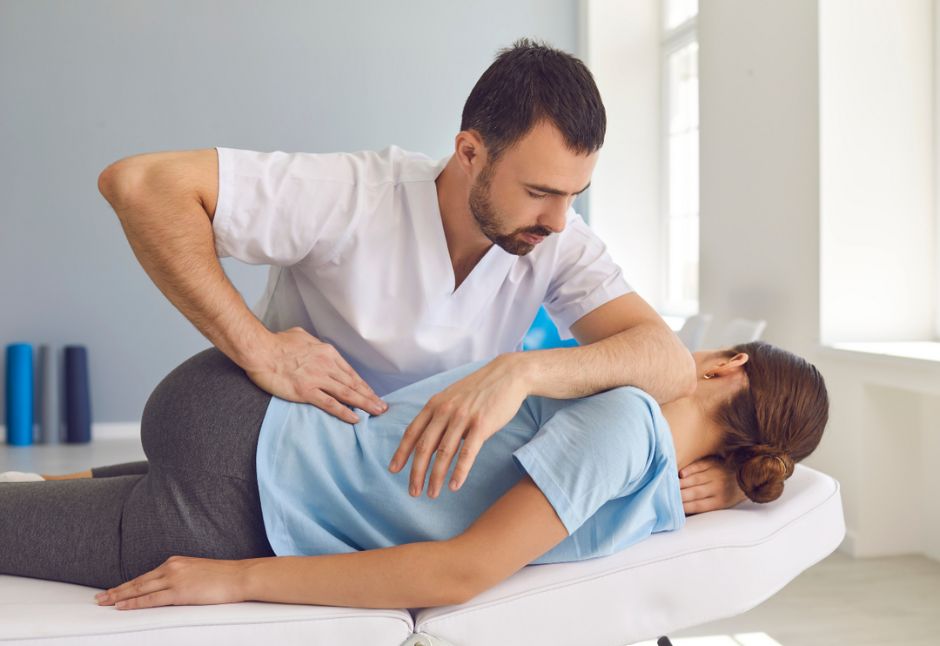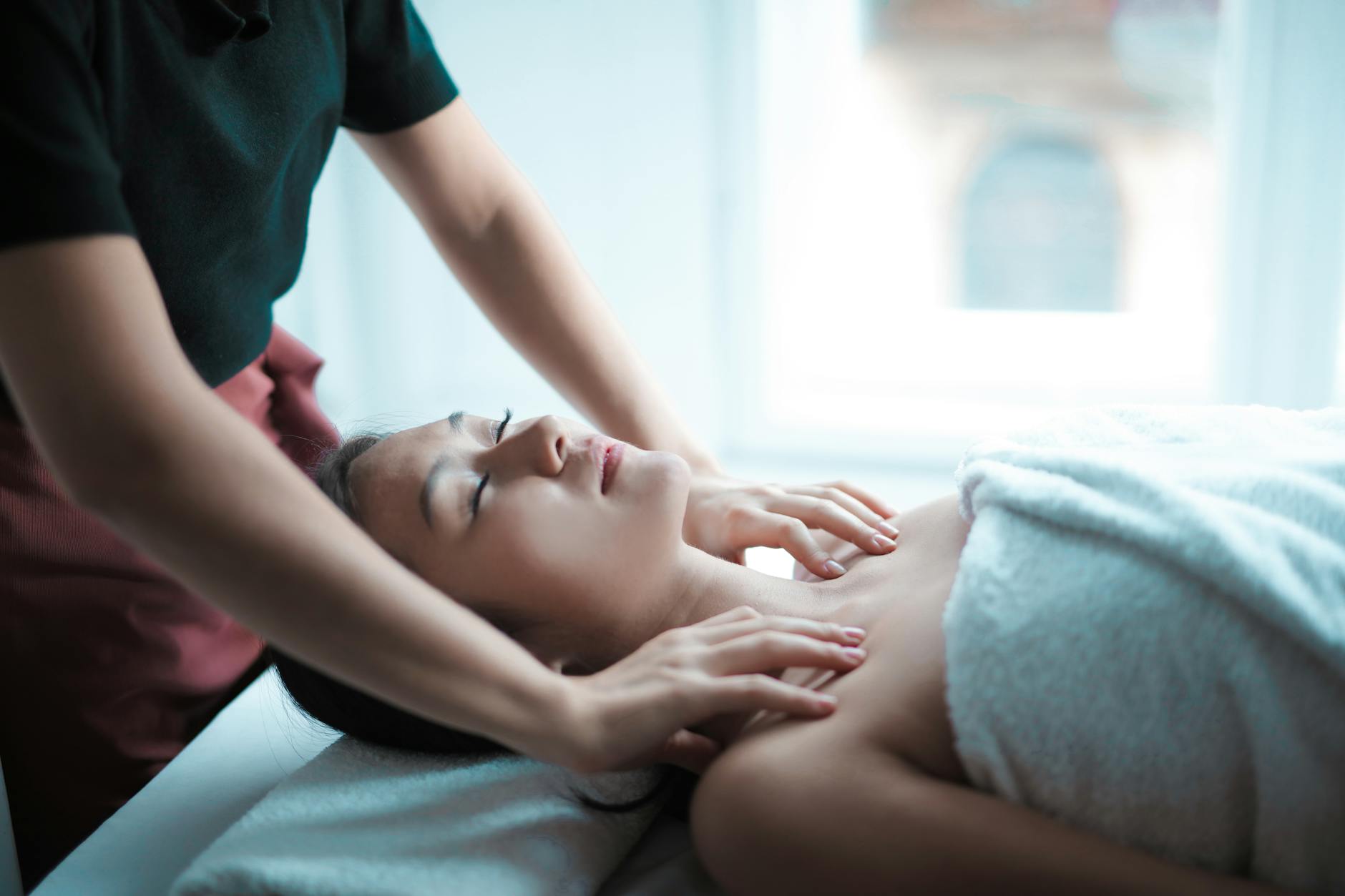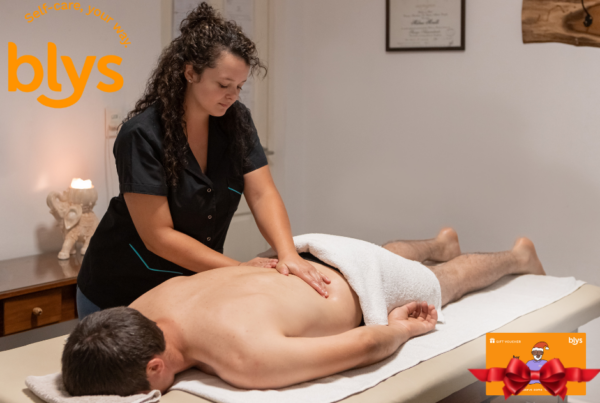
Massage therapy feels great, but it also brings quick physical changes. These changes can include everything from improving how your body feels and works to the release of stress and tension.
Different types of massages affect the body in unique ways. Learn how each one works and what to expect in our complete guide to the types of massages available.
Let’s take a quick look at what happens right after a massage.
Increased circulation: How massage boosts blood flow
 Massage therapy helps improve blood flow by stimulating soft tissues. It also helps encourage the flow of blood through congested areas by getting rid of blockages. This helps enhance oxygen and nutrient delivery and supports faster healing and muscle recovery.
Massage therapy helps improve blood flow by stimulating soft tissues. It also helps encourage the flow of blood through congested areas by getting rid of blockages. This helps enhance oxygen and nutrient delivery and supports faster healing and muscle recovery.
Here’s a look at how massage boosts blood flow effectively.
- Stimulates circulation: The gentle pressure used during a massage encourages blood to flow more easily through muscles and tissues.
- Reduces tension: Massages help relax muscles, which further allow blood vessels to open up and improve blood flow, reducing muscle tension.
- Promotes lymph movement: Helps remove waste products and reduces swelling.
- Increases temperature: When the skin and muscles become warmer following a massage, it enhances blood flow.
Muscle relaxation and tension relief
Massage therapy helps reduce muscle tension and promotes relaxation by improving blood flow and stimulating the nervous system. It helps ease tight muscles, reduces the stress hormone cortisol, and encourages the body to enter a state of calm and healing.
Here’s how massage helps the muscles in the body relax and provides relief from muscle tension.
- Massage helps loosen knots and improve flexibility, providing relief from muscle tension.
- More oxygen and nutrients reach the muscles through a massage, which provides further relaxation to the muscles.
- Massages also help reduce stress hormones, i.e., cortisol, which helps promote calm and steers muscle tension away.
- Activates the parasympathetic system, which can help the body relax naturally.
Toxin release: How massage helps eliminate waste
When we talk about massage therapy being able to ‘release toxins’, we are talking about the massage supporting the body’s natural processes of detoxification, helping improve circulation, lymphatic drainage, and the removal of waste products.
This is how massage therapy does it.
- Boosts Circulation: Massage therapy improves blood flow, which helps transport waste products to the kidneys and liver for elimination effectively.
- Stimulates Lymphatic System: Lymphatic drainage massage encourages the movement of lymph fluid, which helps remove toxins and waste.
- Reduces Stress: Massage helps lower stress levels, which further supports the immune function and detoxification processes effectively.
- Improves Digestion: Gentle abdominal massage can support the digestive system, helping eliminate waste more effectively.
Delayed onset muscle soreness (DOMS): What to expect
Delayed Onset Muscle Soreness or DOMS typically occurs 24-72 hours after intense physical activity. Massage therapy can effectively help reduce the discomfort and speed up recovery by improving blood flow and relaxing the muscles.
Here are some ways massage therapy helps with DOMS.
- Improves Circulation: Massage helps increase blood flow, which can aid in faster muscle recovery as oxygen and nutrients can reach muscles faster.
- Reduces Muscle Tension: It can relieve tightness and promote muscle relaxation.
- Decreases Inflammation: Some types of massage may help reduce inflammation and swelling.
- Enhances Flexibility: Regular massages can help improve the range of motion in sore muscles, thus helping deal with DOMS better.
- Eases Pain: Massages stimulate pain-relieving endorphins and reduce discomfort, which helps considerably in a condition like DOMS.
Common reactions to massage therapy

Massage therapy can lead to various reactions ranging from deep relaxation to temporary discomfort. It is important to remember that these reactions will depend on numerous factors like the type of massage, the individual’s health condition, and their pain tolerance. While some people can experience immediate benefits, others may feel sore afterward for some time.
Headaches after a massage: Causes and solutions
Headaches after a massage can sometimes occur for various reasons. This can be a result of anything from muscle tension to dehydration. Massages are generally beneficial, but certain factors may cause discomfort afterward.
Here is a look at the possible causes and the solutions to deal with these headaches.
- Tight Muscles: A deep massage can release built-up tension, which undoes tight muscles, leading to temporary headaches.
- Dehydration: Massages release toxins that require proper hydration to flush out. If you do not hydrate afterward, you will get a headache.
- Posture: Incorrect positioning during a massage can strain the neck and head muscles. This is why it is crucial to maintain the right posture during a massage.
- Overstimulation: When strong pressure is used during a massage or too much stimulation takes place, it can trigger a headache.
Here is a look at some of the possible solutions:
- Drink Water: It is very important to hydrate before and after your massage.
- Communicate with the Therapist: Ask your therapist to use less pressure or adjust your positioning to prevent potential headaches.
- Gentle Stretches: Ask the therapist to help guide you through stretching exercises after the massage.
- Take a Break: Rest for a few minutes after the massage to allow your body to adjust.
- Use Heat or Cold: Apply a warm or cold compress to your head if needed, or ask your therapist what would work best.
Why you might feel nauseous after a massage
Feeling nauseous is another common issue you might face after a massage, as it will help release toxins from muscles, and sometimes these toxins can make you feel a bit off.
Since a massage also stimulates the nervous system, it can cause dizziness or nausea in some people.
If you feel sick or nauseous after a massage, it is important to remember to drink plenty of water to flush out toxins. It is also important to allow your body time to recover.
Pain or discomfort: When it’s normal and when to be concerned
Pain is a common experience that many individuals go through after a massage. Mild discomfort, like a headache or sore muscles, is quite normal after a massage or any physical activity or stress.
However, when the pain is sharp or accompanied by other symptoms like fever, nausea, or swelling, it could indicate a more serious problem. This needs to be observed by a healthcare professional, like a doctor.
It is important to always listen to your body and seek medical attention whenever something feels off.
Long-term health benefits of massage
Massage, when done regularly and by a certified therapist, can provide many long-term benefits to an individual. Here is a look at some of them.
Pain management: Easing chronic and acute pain
Massage therapy has been known to effectively manage both chronic and acute pain. It helps by reducing muscle tension, improving circulation, and promoting relaxation.
Here’s a look at how massage can help ease chronic and acute pain.
- Reduces muscle tension: Massage helps ease tightness and spasms, thus reducing muscle tension.
- Improves circulation: Massage is also known to promote blood flow, which, in turn, speeds up the healing process.
- Releases endorphins: Endorphins are the body’s natural painkillers, which help reduce the feeling of discomfort and pain.
- Enhances flexibility: Massage is particularly helpful in reducing muscle and joint stiffness.
- Promotes relaxation: This also depends on the type of massage. However, most massages help reduce stress and anxiety, which can worsen pain.
Enhanced immune function: Boosting your body’s defenses
Massage therapy can boost your immune system by increasing blood circulation and promoting relaxation. This helps reduce stress, which in turn supports the body’s immune function. With regular massage, you can improve the body’s ability to fight infections and manage inflammation.
Here is a look at how this works.
- Reduces Stress: Since massage lowers the cortisol levels, it helps the immune system function better.
- Boosts Circulation: Massage therapy also helps improve blood flow, which enhances immune cell activity.
- Promotes Relaxation: By reducing cortisol and producing endorphins, your body recovers and regenerates more effectively, which helps promote a more relaxed body and mind.
Lower blood pressure: Reducing stress and promoting heart health
Studies have shown that massage therapy helps reduce stress and promotes overall heart health as it helps lower cortisol levels and triggers the relaxation response. Regular massage can indeed help reduce blood pressure and is beneficial for the entire cardiovascular system.
Here’s a look at how massage achieves this.
- Reduces Stress: Helps lower cortisol, the stress hormone.
- Improves Relaxation: Triggers the body’s relaxation response, reducing tension.
- Supports Heart Health: Lower blood pressure reduces strain on the heart.
Understanding the emotional impact of massage
Massage doesn’t just provide physical benefits, but it also affects our mental and emotional health. Here is a look at how.
Emotional release during massage: Why it happens
Emotional release during a massage is when strong emotions, like sadness or anger, come to the surface unexpectedly. Since massage can stimulate deep tissues, these emotions surface as these issues are connected to various emotions.
As the muscles relax, they can release stored tension and emotional energy. This release can be both surprising and therapeutic, and can help individuals feel lighter afterwards.
Stress relief and improved mental clarity
Massage therapy offers significant stress relief and can enhance mental clarity. It helps reduce muscle tension, promotes relaxation, a nd eases anxiety.
Massage also helps lower cortisol levels, the stress hormone in the body, and boosts serotonin, which helps improve mood. This is why regular massage can improve overall mental clarity by reducing mental fog and promoting a sense of calm.
Things to do after a massage to maximize benefits
There are certain things you need to remember to do after a massage session to ensure the best results. Here is a look at some of them.
Hydration: Why it’s important post-massage
A massage can leave you dehydrated as it kickstarts your body’s natural detoxification process. It is important to hydrate after a massage to support this process and feel hydrated after the waste elimination happens.
Rest and recovery: Letting your body heal
Although massage therapy is a gentle practice, it can leave your body sore. This is why it is important to get adequate rest post a massage therapy session to complete the healing process.
Avoiding strenuous activity after a massage
A massage can also leave your muscles and tissues sore, and it will take time for this soreness to subside. Indulging in any strenuous activity during this time might make the soreness worse.
If you’re thinking of booking a massage, it’s helpful to understand the typical costs involved. Check out our massage cost breakdown for more details.
Experience the Benefits of Massage with Blys Mobile Massage
At Blys, we have a team of expert therapists by our side who are merely just a call away. We offer several massages like Swedish massage, deep tissue massage, sports massage, et, and you can easily make a booking for a mobile massage from the comfort of your home itself.




